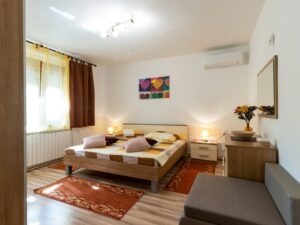When I first started noticing the spike in my energy bills during winter, I thought the culprit was my old heating system. But lo and behold, the real game-changer wasn’t in the vents — it was under my feet. Installing carpet turned out to be one of the smartest moves I made for both comfort and savings. It’s true what they say — a penny saved is a penny earned, and when it comes to flooring, carpet helps you earn plenty in the long run.
Carpet flooring isn’t just about looks or a cozy feel; it’s a quiet energy-saving champion that often flies under the radar. Unlike hard flooring options like tile or laminate that can feel icy cold during the winter, carpet acts as a natural thermal barrier. It helps trap warm air inside, keeping the chill at bay without forcing your heater to work overtime. In summer, it can even keep things cooler by reducing temperature fluctuations across the floor surface. Talk about pulling double duty!
The Hidden Insulation Power of Carpet
I’ll be honest — before diving into flooring, I never realized just how much a simple carpet could influence a home’s temperature. It’s easy to think of insulation as something that only lives in your attic or behind your walls, but your floor plays a huge role in keeping the warmth where it belongs. Carpet, in that sense, is like a cozy blanket for your house — it keeps the heat from slipping away when you need it most.
Here’s the secret sauce: thermal insulation. Carpet acts as an extra layer between your feet and the subfloor, helping to slow down heat transfer. The thicker and denser your carpet, the higher its R-value — a term used to measure insulation effectiveness. Simply put, a higher R-value means your flooring does a better job of keeping your home warm in winter and cool in summer. The carpet fibers trap air, and that trapped air works like nature’s own insulator. It’s like wrapping your home in a soft thermal shield.
And let’s not forget the unsung hero — carpet padding. The right underlay can make a world of difference. It enhances the insulating properties by creating another cushion of air beneath the carpet. In fact, a high-quality pad can boost your carpet’s insulation performance by as much as 20–25%. That’s no small beans when you’re trying to cut down on heating costs!
In winter, I can literally feel the difference — no more cold floors that make me hop around like I’m walking on ice cubes. Instead, the warmth stays trapped inside the room, and the floor feels comfortable underfoot. Come summer, the same insulating effect helps keep cool air from escaping, reducing the need to constantly adjust the thermostat.
So, while it might look like just another decorative touch, your carpet is quietly working behind the scenes — keeping your home snug, your toes toasty, and your energy bills in check. As the old saying goes, “it’s what’s underneath that counts.”
Carpet vs. Hard Flooring — Which Saves More Energy?
Now, this is where the rubber meets the road — or rather, where the carpet meets the floor! Many homeowners wonder whether carpet really makes that big of a difference compared to hard surfaces like tile, hardwood, laminate, or vinyl when it comes to energy efficiency. I’ve walked on all types, and trust me, the difference isn’t just in how they feel — it’s in how they perform when the temperatures drop.
Hard flooring may look sleek and modern, but when it comes to trapping warmth, it’s about as effective as leaving your window cracked open in winter. Materials like tile and hardwood have a low R-value, meaning they absorb and lose heat quickly. The result? Cold surfaces underfoot, drafty rooms, and a heating system that works overtime just to keep up.
Carpet, on the other hand, acts like a natural thermal barrier. Thanks to its pile height, fiber density, and padding, it prevents heat from escaping through the floor. Think of it like wearing a thick pair of wool socks versus going barefoot on cold concrete — one keeps you cozy, the other leaves you shivering! That’s the beauty of carpet flooring: it helps maintain a consistent indoor temperature, reducing the need for your HVAC to constantly switch on and off.
Let’s talk numbers for a second. According to energy experts, properly insulated carpet and padding can reduce heat loss through floors by up to 10%, depending on the material and installation. Over time, that translates to noticeable savings on your heating and cooling bills — and in today’s economy, that’s nothing to sneeze at.
In rooms where comfort matters most — like bedrooms, living rooms, or basements — carpet truly shines. Hardwood might look great in a hallway, but if you’re after a cozy, energy-smart space, carpet takes the crown. As I often tell my clients, “Why let your money slip through the cracks when your floor can help you save it?”
Choosing the Right Carpet for Energy Efficiency
Now that we know how carpet helps save on heating and cooling, let’s talk about the million-dollar question — how do you choose the right carpet for maximum energy efficiency? Not all carpets are created equal. Some work harder than others to keep your home snug as a bug in a rug, while others are more style than substance. I’ve learned that choosing wisely from the get-go makes all the difference when you’re aiming to lower energy bills without sacrificing comfort.
First off, let’s talk material. If energy efficiency is your goal, wool carpet is a superstar. It’s a natural insulator, breathable, and durable enough to last for years. Wool fibers trap air beautifully, providing excellent thermal protection while regulating humidity levels in your home. However, if you’re looking for a more budget-friendly option, nylon and polyester carpets are solid choices too. They both have good insulating properties and retain warmth effectively — and with today’s technology, they can mimic the soft, plush feel of natural fibers.
Next up — density and pile height. A thick, dense carpet with a higher pile height does a better job at trapping air, which improves insulation. Think of it like layering up in winter: the thicker your coat, the warmer you stay. Low-pile carpets, on the other hand, may be easier to clean but don’t offer the same level of insulation. So if energy savings top your list, go for a medium- to high-pile carpet.
Then there’s the unsung hero — carpet padding. I can’t emphasize enough how vital good padding is. A high-quality underlay made from foam, rubber, or fiber adds another layer of insulation beneath your carpet, reducing heat loss and keeping the floor more comfortable year-round. My go-to tip? Don’t skimp on padding — it’s like putting the right foundation under your house; it supports everything above.
If sustainability is also on your radar, consider eco-friendly carpets made from recycled materials or natural fibers like jute, seagrass, or sisal. These not only save energy but also reduce your carbon footprint — talk about killing two birds with one stone.
In short, when choosing carpet for energy efficiency, keep your eye on three key factors: material, density, and padding. Get those right, and your carpet will work quietly in the background — keeping your toes warm, your rooms cozy, and your utility bills pleasantly low. As I like to say, “A smart floor keeps more than just your feet happy — it keeps your wallet smiling too.”
How Carpet Reduces Heating and Cooling Costs in Real Life
Here’s where the rubber meets the road — or should I say, the carpet meets the cold floor. The magic of carpet’s energy efficiency isn’t just theory; you can feel it in everyday life. I’ve seen it time and time again in homes where simply switching from hard flooring to carpet made a world of difference — both in comfort and in the energy bill.
Let’s start with winter. We all know that heat rises, right? But a lot of it also escapes downward through uninsulated floors — especially if you have a concrete slab or wooden subfloor. That’s where carpet comes in like a knight in shining armor. It traps warm air in its fibers and padding, acting as a barrier between the cold floor and your cozy room. That means you can set your thermostat a couple of degrees lower and still feel just as warm. Believe me, that small change can add up to big savings over the course of a cold season.
Then there’s the draft factor. In older homes, you often get chilly air sneaking in through the floorboards. Carpet, with its dense pile and underlay, helps seal those little gaps. The result? Fewer cold spots and a more stable room temperature. No more walking from one end of the room to the other and feeling like you’ve stepped into a different climate zone.
Now, flip the calendar to summer. While carpet might seem like a winter hero, it doesn’t take a vacation when it’s hot out. By stabilizing indoor temperatures and preventing rapid heat transfer through the floor, it helps your air conditioner work less. That translates to lower cooling costs — and less wear and tear on your HVAC system. It’s the perfect example of killing two birds with one stone: comfort and cost savings.
Different rooms feel the benefit in different ways. Bedrooms stay warmer overnight, living rooms feel more inviting, and basements lose that bone-chilling cold. In fact, I often tell homeowners to install carpet in spaces where people spend the most time barefoot — that’s where you’ll feel (and save) the most.
At the end of the day, carpet works quietly behind the scenes — like that reliable friend who’s always got your back. It softens every step, muffles sound, and helps keep your heating and cooling bills in check. As the old saying goes, “Comfort doesn’t have to cost an arm and a leg” — especially when you’ve got the right flooring underfoot.
Long-Term Savings and Eco Benefits
When it comes to making your home both energy-efficient and eco-friendly, carpet flooring is the gift that keeps on giving. While it’s easy to notice the immediate comfort underfoot, the long-term benefits sneak up on you — in the best way possible. Over the years, I’ve seen homeowners cut their energy costs noticeably just by switching to well-insulated carpet flooring. It’s proof that saving the planet and saving money can go hand in hand.
Let’s start with the long-term financial side. Carpet doesn’t just help you save a few dollars each month; those savings stack up year after year. By reducing heat loss and lowering the workload on your HVAC system, carpet extends the life of your heating and cooling units. Less strain means fewer breakdowns and reduced maintenance costs — and that’s music to any homeowner’s ears. You might not see it overnight, but over a decade, those small energy savings can add up to hundreds, even thousands, of dollars.
From an environmental perspective, carpet contributes to sustainable living in more ways than one. Many modern carpets are made from recycled materials or eco-friendly fibers, reducing waste and the demand for virgin resources. Plus, because carpet helps maintain stable indoor temperatures, it reduces your home’s carbon footprint by minimizing energy consumption. In other words, you’re keeping both your home and the planet a little warmer — figuratively and literally.
Another bonus? Carpets improve indoor air quality when maintained properly. They trap dust, allergens, and particles, keeping them out of the air you breathe. Pair that with regular vacuuming, and you’re not just saving energy — you’re creating a cleaner, healthier home environment.
Final Thoughts — Comfort Meets Cost Savings
When all’s said and done, saving energy costs with carpet is like hitting two birds with one stone — you get comfort and cost savings all wrapped in one soft, cozy package. Over the years, I’ve come to appreciate that carpet isn’t just a decorative feature; it’s a quiet partner that helps keep my home warm in the winter, cool in the summer, and energy-efficient year-round.
The truth is, our floors play a bigger role in home insulation than most people realize. Carpet, with its plush fibers and insulating underlay, helps your HVAC system take a well-deserved breather — and that means fewer kilowatts burned and more dollars saved. Whether it’s the natural warmth of wool or the durability of modern synthetics, the right carpet choice can make your home feel snug as a bug without breaking the bank.





